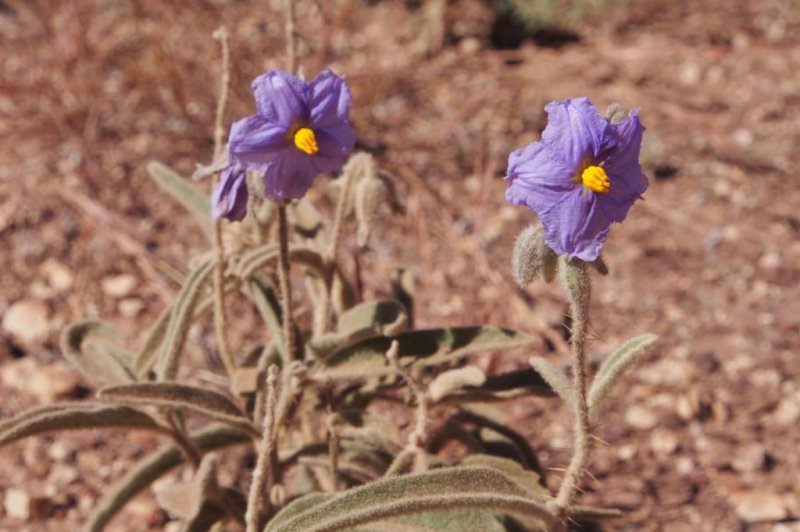The unusual fluidity of the flower form of S. plastisexum inspired its name.
Photo by Chris Martine/Bucknell University
June 18 (UPI) -- Scientists have finally given a unique bush tomato species, native to the remote Australian Outback, an official moniker. They named the plant Solanum plastisexum.
The plant serves as a reminder, researchers claim, that gender and sexuality are frequently fluid in the plant and animal kingdom.
The bush tomato species was first discovered by botanists in the 1970s, but it went unnamed due to the fluidity of its flower forms. At different times and during different surveys, the plants appeared to be female, male or bisexual.
Some 85 percent of flowering plants produce bisexual flowers -- with both male and female parts.
"So that's already quite different than what some people might expect; but the remaining 15 percent or so come in all sorts of forms that push the envelope further, including unisexual flowers and -- like we see in a plant like Cannabis -- whole plants that are either male or female," Chris Martine, a professor of biology at Bucknell University, said in a news release.
"For the most part, a given plant species will stick to one primary and predictable type of sexual expression, but what makes Solanum plastisexum stand out is that it is one of a just a few plants that kind of do it all," Martine said. "It really seems like you never know what you'll get when you come across it."
New DNA analysis of the bush tomato plant confirmed that the different sexual iterations of plant comprised the same species -- one yet to be named in the scientific literature. Scientists found and studied several specimens in the remote shrubland of Australia's Northern Territory.
Researchers described the specimens and the species' new name this week in the journal PhytoKeys.
"This name is not just a reflection of the diversity of sexual forms seen in this species," researchers write in their paper. "It is also a recognition that this plant is a model for the sort of sexual fluidity that is present across the plant kingdom -- where just about any sort of reproductive form one can imagine -- within the constraints of plant development -- is present."
More than just a model for understanding plant sexuality, the authors of the new paper suggest the Solanum plastisexum is a reminder that gender and sexual fluidity is common throughout the natural world.
"S. plastisexum ... is also evidence that attempts to recognize a 'normative' sexual condition among the planet's living creatures is problematic," researchers write. "When considering the scope of life on Earth. The notion of a constant sexual binary consisting of two distinct and disconnected forms is, fundamentally, a fallacy."















